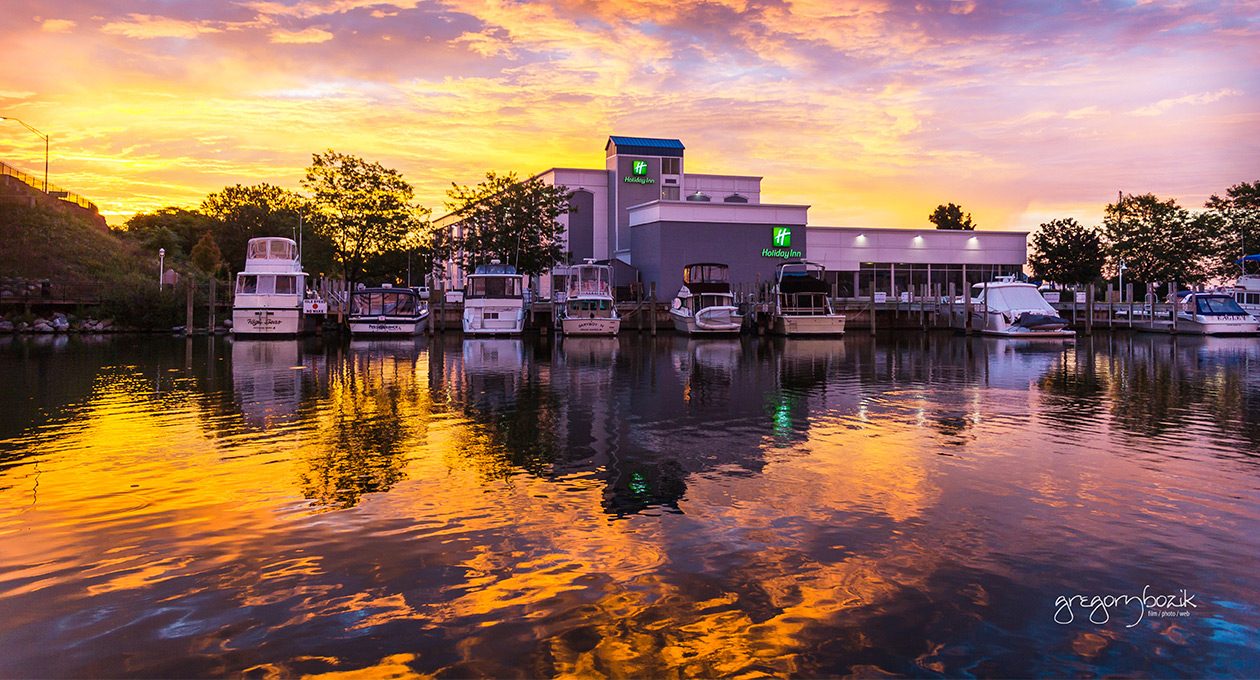
Sand Hill Properties of San Mateo bought the mall in 1995 and announced plans to begin renovation. Retail analyst Arthur Krakower told the San Francisco Examiner in 1993 that factors leading to the mall's decline included the loss of department stores, combined with an excess of shopping malls built in the 1980s. In response to this, Hahn proposed to replace the center with outlet stores, but was unsuccessful in negotiating with any prospective retailers. By 1993, the center was over 80 percent vacant among the major stores that had closed were Oshman's Sporting Goods, Foot Locker, and Pier One Imports. Between this and the fact that Whole Earth Access did not open to the mall, the interior quickly experienced a decline in tenancy.

JCPenney left the mall in 1991, thus leaving two of the mall's four anchor stores vacant once more. All American Sports Club filed for bankruptcy and closed all of its stores in 1989. Terramonte renamed the mall to The Island and sold the vacated Liberty House location to Whole Earth Access, a counterculture retailer based out of Berkeley, California, in July 1987. Also as part of this deal, Amfac, then-owners of the Liberty House location, closed the store in order to sell its lease to Hahn.

In 1987, Terranomics Development of San Francisco, California, purchased a 25 percent stake in the mall.

Furthering the mall's failure was the expansion of nearby Hillsdale Shopping Center throughout the 1980s. Later that year, Federated Department Stores (now Macy's, Inc.) closed the Bullock's location and sold it to real estate developer Sterlik Company, which converted 84,000 square feet (7,800 m 2) of the 130,000-square-foot (12,000 m 2) store into a sporting goods store called All American Sports Club. Hahn had attempted to sell the mall to DeMonet Industries, but was unable to negotiate a sale price. In addition, construction along Highway 92 made the mall difficult to access. Factors in this underperformance included the Teflon-coated "fabric roof" of the Bullock's store which, combined with problems in the store's ventilation system, created issues with the store's internal temperature. Decline īy 1986, Hahn Company had put the mall up for sale due to underperformance. The only one to remain open was the Fashion Island store. In 1984, Liberty House closed nine of its ten California stores due to restructuring after poor sales the previous year.
GRAND LONG BEACH EVENTS CENTER EVENTS MAKER FAIR MOVIE
In addition to the four anchor stores, other amenities upon opening included an ice skating rink, a food court, and a multiplex movie theater. The mall was formally opened on May 2, 1982. In relation to the mall's development, developers including Menlo Development and Trammell Crow Company announced plans to build adjacent residential and office complexes. The mall also employed a number of architects: Charles Kober and associates for the mall itself, Environmental Planning and Research for the Montgomery Ward and Bullock's stores, Millard Archuleta for the JCPenney store, and Chaix and Johnson for Liberty House. These would be national chains Montgomery Ward and JCPenney, along with California-based chain Bullock's and Hawaii-based Liberty House.

Plans called for a 844,000 square feet (78,400 m 2), one-story shopping mall with four anchor stores. In response to this, the engineering firm of Ruthroff and Engelkirk built piling foundations under each structure so as to allow "flexibility" to the structure. The site chosen for the mall was previously a muddy field, which presented challenges in construction. The developers chose a site along the California State Route 92 freeway in San Mateo, California. The Hahn Company, a California-based shopping mall developer, announced plans to build San Mateo Fashion Island in 1980. Major tenants of Bridgepointe Shopping Center include The Home Depot and Target. Bridgepointe Shopping Center is owned and managed by CBRE Group. Following the closures of Bullock's and Liberty House, the mall went into decline throughout the 1990s, leading to its closure and demolition in favor of a power center. Opened in 1982 as San Mateo Fashion Island, it was originally an enclosed shopping mall featuring JCPenney, Bullock's, Liberty House, and Montgomery Ward as its anchor stores. Bridgepointe Shopping Center LocationĨ44,000 square feet (78,400 m 2) (San Mateo Fashion Island)ĥ72,000 square feet (53,100 m 2) (Bridgepointe Shopping Center)īridgepointe Shopping Center is a shopping mall in San Mateo, California, United States.


 0 kommentar(er)
0 kommentar(er)
